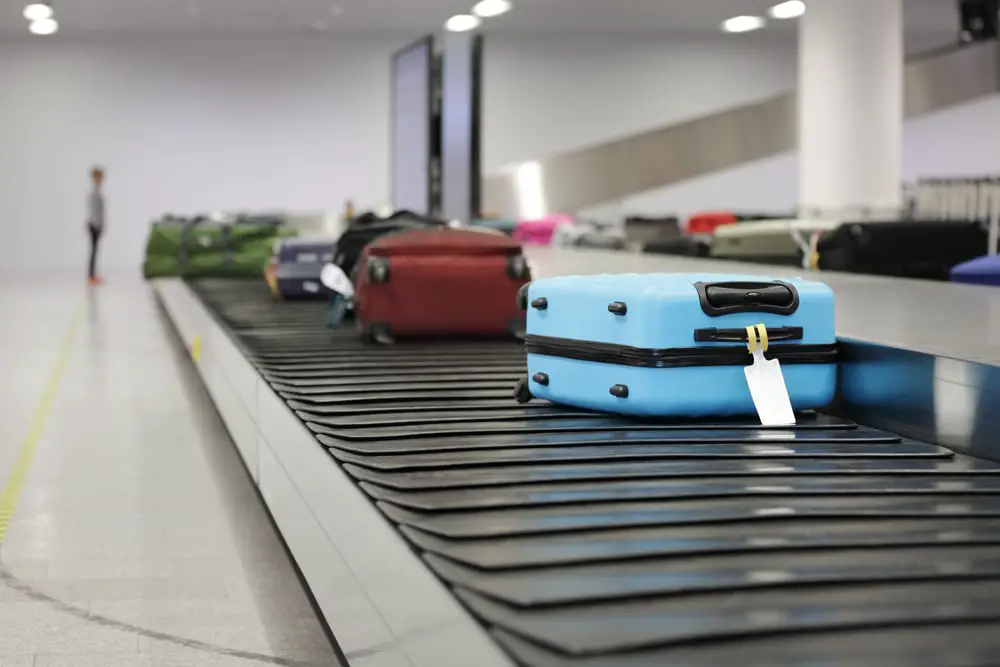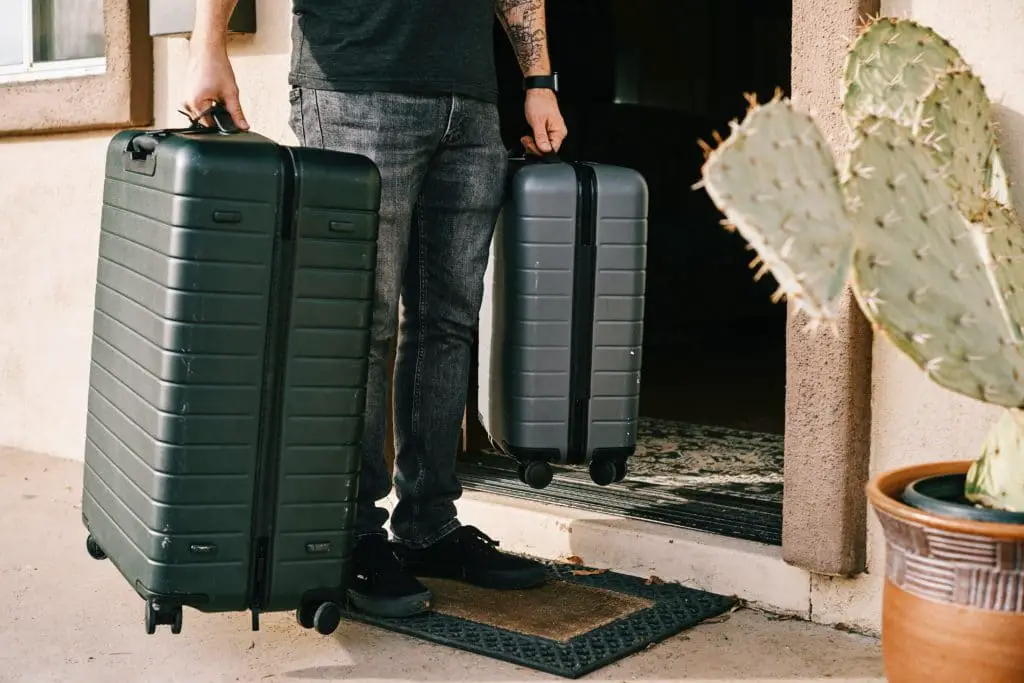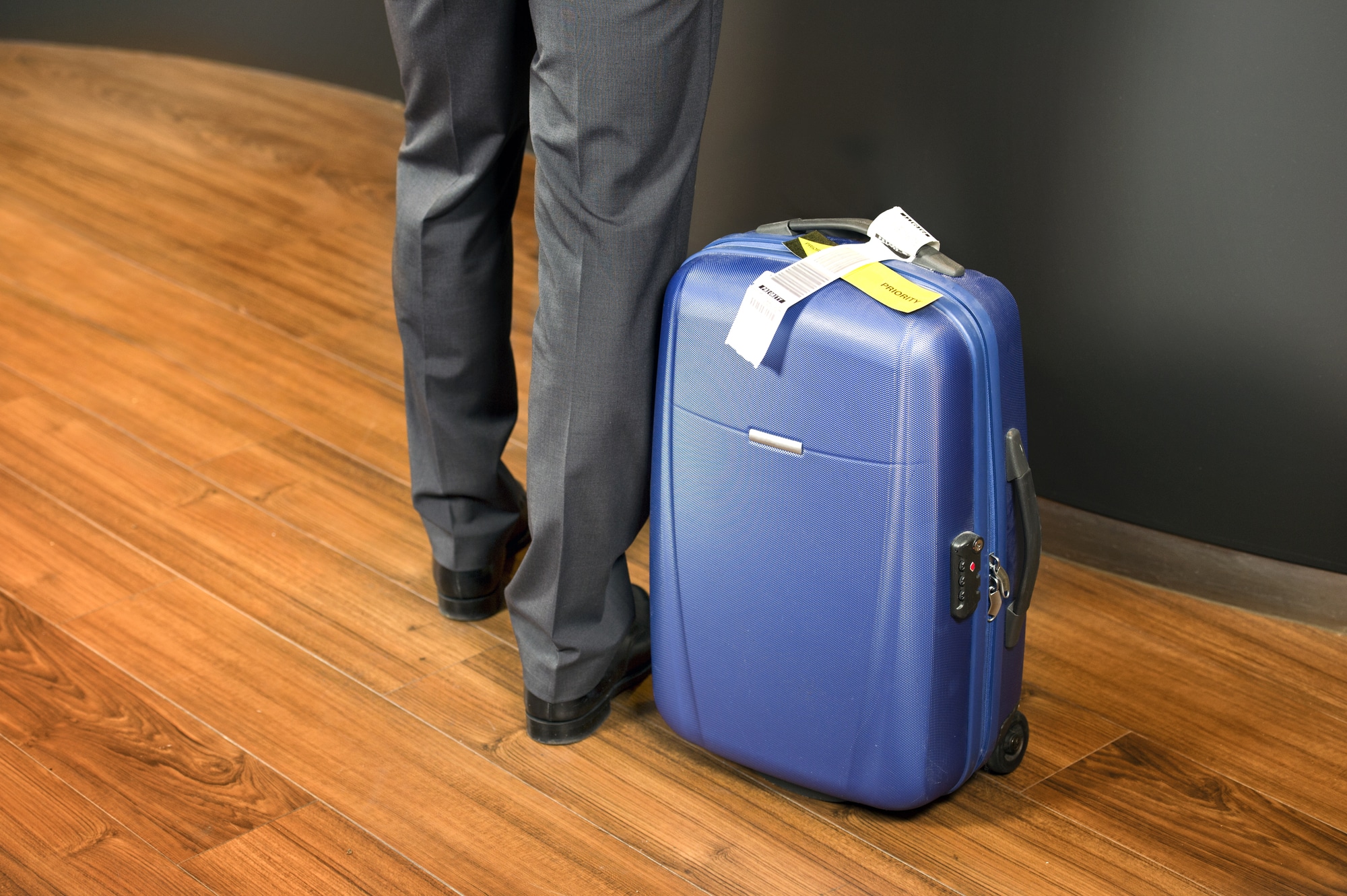There are a few ways that you can keep your luggage clean and safe from scratches.
First, luggage covers are an easy, affordable way to protect your luggage from scratches. There are many kinds of luggage covers. The primary kind is made of soft cloth material. These covers will stretch and slide over your luggage.
The other type of luggage cover is made of plastic. These covers are usually clear, and they will fit your luggage and be secured using zippers or plastic. Plastic luggage covers are best for keeping your luggage clean too, but the cloth kind is less noisy and easy to have on your luggage.
If you want to keep your luggage safe but do not want to purchase a luggage cover, you can wrap it yourself using plastic wrap. However, this can be a hassle since you need to rewrap your bag every time you need to open it, including at the end of your trip when it is time to return home.
Another downside to wrapping luggage yourself is that TSA can rip or cut through the wrap if they need to search your bag for any reason. They will not replace the wrap if this happens, so you risk having your bag unprotected.
Table of Contents
Do Airlines Prefer Hard or Soft Luggage?
Airlines do not have a preference between hard and soft luggage, although you will always see flight attendants and pilots with soft-sided bags. The type of bag that airlines prefer is any bag with four wheels.
The bags with four spinning wheels are best because they can roll down ramps and into the plane instead of being thrown. Keeping your bag from being thrown more than necessary will protect your luggage and everything inside.
While airlines do not have a preference for hard or soft bags, there are benefits to both soft and hard-sided luggage, and there are downsides to both as well. This comparison will help you decide which type of luggage is best for you.
Soft Luggage
First, soft luggage stacks better than hard luggage. Having bags that stack well will prevent your luggage from sliding around on the plane or the baggage carts on the way to and from the plane.
Additionally, soft-sided luggage is easier to pack since the material is more flexible. If you need to shove a few extra items in your bag or squeeze your bag into a smaller space like an overhead compartment, soft-sided luggage will be best.
Finally, soft-sided luggage typically weighs less than hard-sided luggage. Having a light bag is important for your checked luggage since airlines will weigh your bag at check-in, and if it is over the weight limit, you will need to pay extra or somehow lighten your luggage.
If you need to condense the items in your luggage, try using vacuum storage bags.
Hard Luggage
Hard-sided luggage will do the best job at protecting your belongings. If you pack anything fragile, you want it to be as protected as possible; a hard outside with a little flexibility is important.
Furthermore, hard luggage can stay dry, whether in the rain or from someone else’s leaking bag. Not only will this protect your clothing and other belongings, but it will make your bag last longer since the material is not getting wet and ruined.
One of the downsides to hard luggage is that it can crack under a lot of pressure. More hard-sided luggage is being made with a little flexibility to prevent this. If you buy a hard-sided bag, try finding one with a little bit of movement when you put pressure on the sides.
You May Also Like: Can I Use a Cardboard Box as Checked Luggage?
How Do I Secure My Checked Luggage?

The best way to secure your luggage is with a lock. There are two types of locks that you can use for your luggage: a TSA-approved lock and a high-security lock.
A TSA-approved lock is one that security will have a key to access if they need to open your bag for a security check. These are great since you do not have to worry about your lock being broken when you retrieve your luggage after your flight. However, the downside is that virtually anyone can get their hands on TSA lock keys, so your belongings may not be as safe as you might think.
The other lock option is a high-security, non-TSA-approved lock. These locks are safer because only you will have access to the key or code to open it. However, if your bag needs to be searched for any reason, security will not have a key, so they will need to break your lock, and your belongings will not be secure after that point.
Another way to secure your luggage is to use a hard-sided or tamper-proof bag. Soft-sided bags are easy to slash open, whether intentionally or unintentionally. If your bag gets caught on something sharp, it can rip open, and you can lose your belongings.
Luggage thieves can also slash your bag open with a knife to bypass the lock. They can also rip open the zipper to get into your bag if they want to get in. Tamper-proof luggage can help prevent this, as will a secure, hard-sided bag.
Does the TSA Allow Luggage Covers?
The TSA does allow luggage covers. The best kind can be easily removed using their zippers or velcro so that they do not get ruined and can be easily replaced.
The TSA is also fine with wrapping bags with plastic wrap, but they will cut it off if they need to inspect your bag, and they will not replace it. They can also cut reusable luggage covers if they can not get them off bags fast enough to inspect them.
If you use luggage covers, try to keep your bag looking as normal as possible, so you have a smaller chance of getting picked for a search. Fill your bags with mostly clothing and toiletries.
Big bottles of alcohol, large or oddly shaped objects, or electronic items and batteries are a few items that often warrant a bag search, and therefore will require TSA to remove your luggage cover.
For example, empty bags can raise suspicion, even though they are legal to fly with. Learn more about taking an empty suitcase on a plane here.
General Luggage Tips

A generic, black suitcase will make your bag harder to spot quickly, whether at baggage claim, at the security checkpoint, or anywhere else in the airport. If you can choose a unique bag, you can find it easier and keep an eye on it for safety. You can also add a ribbon, tape, or something else on your luggage to make it easier to find and alert others that it is not theirs.
Generic or popular luggage is also more prone to be taken by thieves. If someone takes a generic bag, it will be easier for them to get away since the bag could look like it can belong to anyone.
Additionally, it will be harder for you to spot a luggage thief right away since all the bags look the same. Having a unique bag or tag will make your luggage less prone to theft.
Furthermore, any bags with a lot of straps or handles are prone to ripping or breaking. They can get caught on other bags, get stuck in a conveyor belt, or just wear out from the overwhelming process that checked bags go through. Having a bag with minimal straps and handles can help your bag stay in good shape for longer.
Finally, make sure to hide the most valuable items in your bags. Whether it is your checked luggage, a carry-on bag, or a smaller backpack, thieves will have a harder time stealing from you if they can not find anything of value.
When people steal from travelers, they need it to be easy and fast, so if your wallet is at the very bottom of your backpack, or your extra cash is rolled up in your dirty socks, it will be harder to find, so you have less of a chance at losing something valuable.
Final Thoughts
Knowing how to properly protect and secure your luggage can make your vacation much less stressful. Using a luggage cover can keep your bag safe from damage, and using a lock will keep your belongings safe. Both hard and soft-sided luggage have positives and negatives, so you will need to choose the type of luggage that is best for you.

